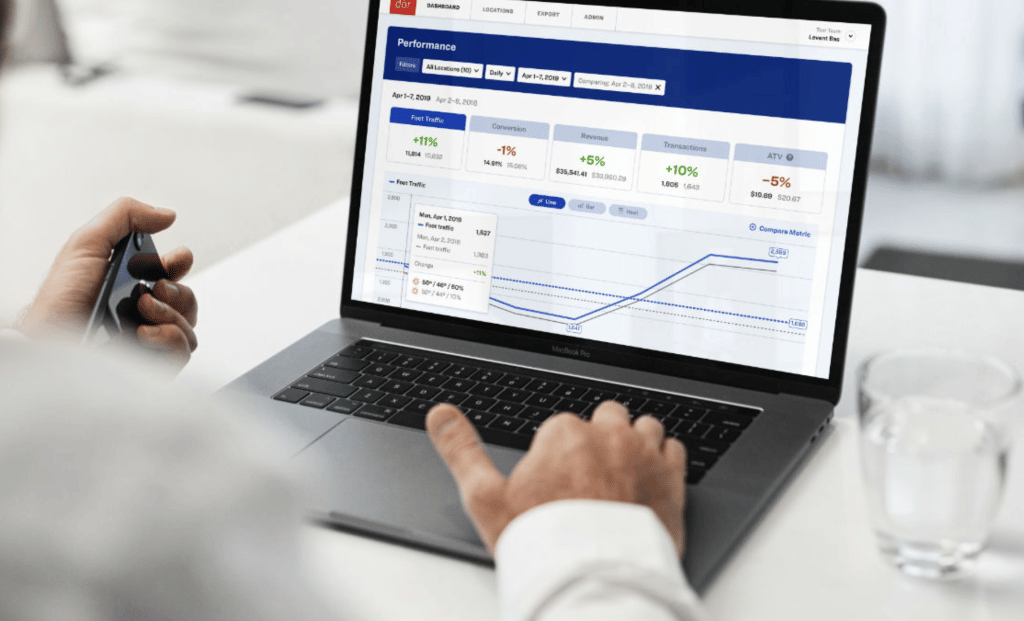The retail sector is constantly in a state of competition. Every retail company wants to become more well-known and profitable. Your retail business goals can be met by determining the needs of the market and meeting those needs. Retail analytics helps in identifying the problems that the retail sector is facing and come up with solutions. By implementing a retail analytics solution, you may enhance client retention, inventory management, and more. These are the main areas where embedded analytics enhances the retail industry.
What is Retail Analytics?
Analyzing data produced by retail operations with the intention of making commercial decisions that increase profitability is known as retail analytics. As a result of the unexpected changes in customer behavior, increased margin pressure, shifting roles for stores, and increased competition for both online and offline channels, the use of retail analytics has grown. To make more educated, strategic decisions, the process of tracking corporate data, such as inventory levels, consumer behavior, sales figures, and more retail analytics plays an important role. This involves giving information to comprehend and improve the supply chain, consumer experience sales trends, operational procedures, and overall success of the retail organization.
Why is retail analytics crucial?
To deliver the right products at the right time, retailers need to precisely target and anticipate customer wants. To do this, they need analytics. By identifying areas for development and optimization, analytics may assist retailers in making the best marketing choices, enhancing their operational procedures, and providing better overall consumer experiences.
How can analytics be used by retailers?
Analytics can be useful across a variety of retail business functions. First, a thorough understanding of the business and an evaluation of the effectiveness of business procedures can be provided through retail analytics. For instance, a shop can employ predictive analytics to shelf products better and related expenses by adjusting inventory based on customer purchase habits.
The retail sector is seeing an increase in personalized marketing, which calls for a thorough knowledge of distinct customer preferences. With the use of retail analytics, businesses may create customer-specific strategies that will boost the effectiveness of their marketing initiatives.
Benefits of Retail Analytics
1. Insights on customer behavior
Utilizing retail analytics has several benefits, but its main benefit is that it provides concrete, usable insights on consumer behavior. Consumer behavior analysis/ sentiment analysis would help to understand exact consumer needs and will give retailers a peek into consumer minds. They can thus strategize their marketing initiatives, store design, inventory, more efficiently. Moreover, these customized experiences would attract better ratings and reviews on various social platforms
2. Improved Store Operations
Retail analytics in-store provide a comprehensive understanding of customer behavior inside the store. Assessing/ analyzing or Finding out about their purchasing habits can lead to countless business prospects for all types of retail establishments, from little convenience stores to large shopping centers. Retailers can analyze and optimize. Retailers can provide better customer experiences by handsomely employing their staff at different times. They can even gain insights on what product would sell faster if placed next to a relative item and design the store experience in a more efficient way. and the most effective selling strategies. Product placements which garner the most attention and the service delivery quality that customers feel more satisfied with.
3. Marketing ROI Improvement
Retail analytics, aid in assessing and enhancing return on investment across numerous business management aspects. On the basis of what resonates with its particular consumer, they can concentrate on successful campaigns and streamline marketing initiatives. Using Direct sort delivery Retail analytics, one can evaluate the viability of consumer loyalty programs, seasonal sales, limited-time promotions, and more.
4. Improving Loyalty
By analyzing variations in demand across consumer segments, identifying key value goods, grouping stores into zones, and even moving online or creating new branches, analytics enable retailers to gain useful information. They enable merchants to grow their firm and provide a strategic framework for their upcoming planning.
5. Managing the Fundamentals
Retail analytics has the potential to significantly improve operational efficiency. With the use of predictive retail analytics, the seller is able to make quick decisions on the frequent tracking, refilling, and stocking of SKUs. Sellers can chart the patterns that are prevailing in the current market by keeping track of how frequently a specific product is moved from the shelves to the shopping carts. They can use this information to determine which of their products are the most in demand so that they can concentrate on those and related items to boost sales.
The Takeaway
For retailers there is a very little margin of error to sustain and expand their businesses with stiff competition at hand. They need tools that can advise best suited strategies to sell faster, form better customer bonds, and promote repeat business. Retails Analytics solutions not only help retailers realize their current business standing but provide them with necessary tools to take futuristic decisions keeping aspects like customer behavior, staff allocation in mind. This would help them to smartly create personalized experiences as well to devise ways to constantly be at the top of their competition.
